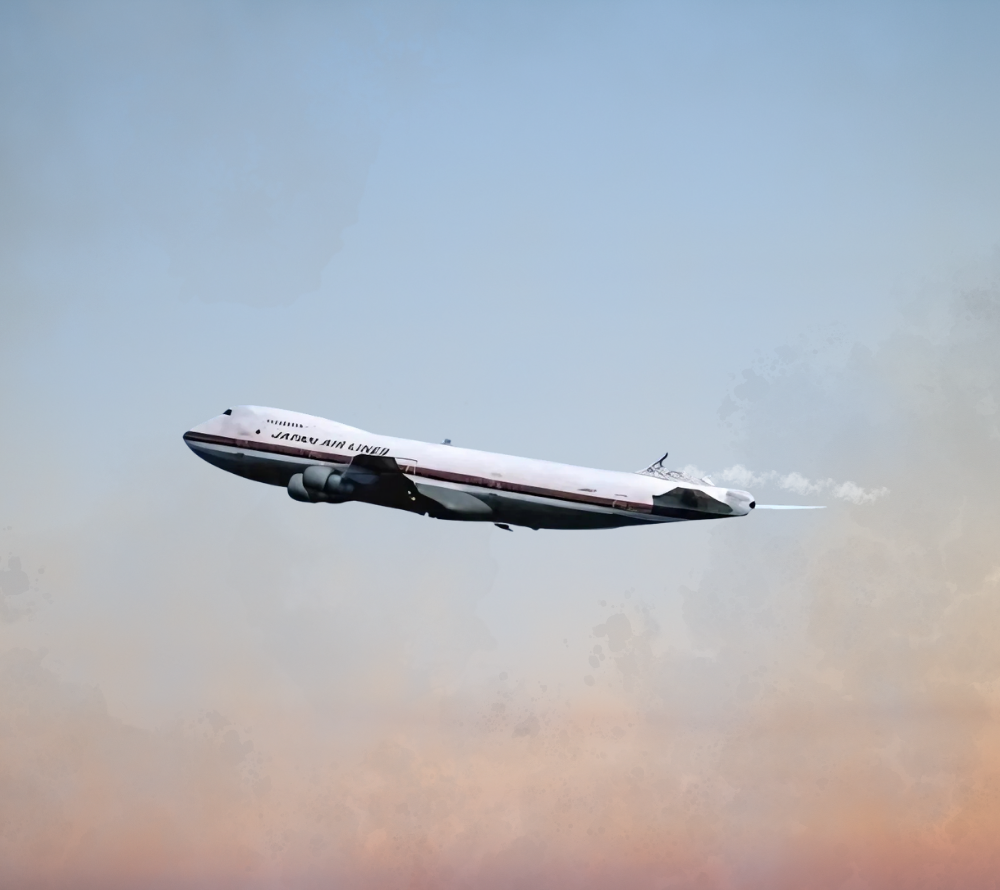Introduction
On August 12, 1985, Japan Airlines Flight 123, a Boeing 747SR, suffered a catastrophic failure soon after takeoff from Tokyo Haneda Airport. The rear pressure bulkhead, improperly repaired years earlier, ruptured mid-flight. This caused explosive decompression, damaged the hydraulic systems, and made the aircraft almost impossible to control.
The crew fought bravely for over 30 minutes, attempting to steer the crippled plane using engine thrust alone. Despite their efforts, the jet crashed into mountainous terrain in Gunma Prefecture. Tragically, 520 people lost their lives, with only 4 survivors.
This disaster remains the deadliest accident involving a single aircraft in aviation history. It highlighted the importance of correct aircraft maintenance and inspections, and it forever changed how structural repairs are carried out and monitored.
What Went Wrong
1. Faulty repair
In 1978, the same aircraft suffered a tailstrike at Osaka. Boeing repaired the rear pressure bulkhead, but the fix was done incorrectly. Instead of a continuous doubler plate, two separate pieces were used, leaving a weak joint.
2. Progressive fatigue (Metal Fracturing)
Over seven years, small cracks grew around the faulty repair. On August 12, 1985, the bulkhead finally ruptured under pressure.
3. Hydraulic failure
When the bulkhead burst, the tail structure tore apart, severing all hydraulic lines. With no hydraulics, the pilots lost control of the rudder, elevators, and ailerons.
4. Uncontrollable aircraft
The 747 was left drifting, yawing, and pitching with little response to control inputs. The crew attempted to steer by engine thrust but couldn’t stabilize the jet.
Consequences
• 520 passengers and crew perished. Only 4 people—two women, a girl, and a young man—survived.
• Voice recorder data showed the crew’s determination to save the plane despite impossible odds.
• Survivors later reported that some passengers lived for hours after the crash, but rescue operations were slowed by difficult terrain and poor coordination.
The disaster led to major changes in aviation safety:
• Improved repair standards: Aircraft manufacturers and airlines adopted stricter rules for structural repairs. Every repair now had to be fully documented, inspected, and certified to prevent similar long-term weaknesses.
• Redundant hydraulic protection: The accident showed the danger of routing all hydraulic lines close together. New designs ensure better separation to prevent a single failure from disabling every system.
• Focus on emergency response: The slow rescue effort in Gunma led to major reviews of Japan’s disaster-response protocols. Faster mobilization and better coordination became priorities.
• Crew training awareness: While the crew had little chance of success, their attempt to control the aircraft with engines alone became a case study in emergency response.
Conclusion
Japan Airlines Flight 123 remains the deadliest single-aircraft accident in aviation history. It was not caused by weather or pilot error, but by an undetected weakness from an improper repair years earlier. The tragedy stands as a reminder that even small maintenance mistakes can have catastrophic consequences.
From this disaster, aviation gained stricter safety standards, better repair practices, and a deeper respect for the critical link between engineering, maintenance, and human lives.
